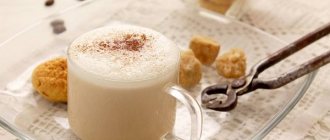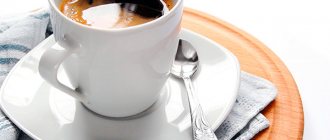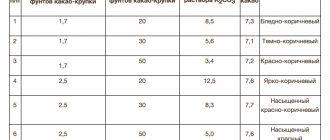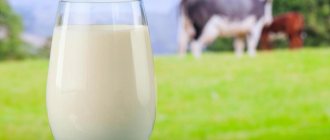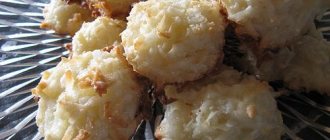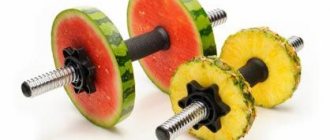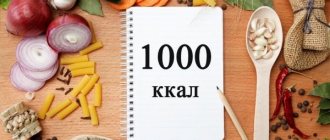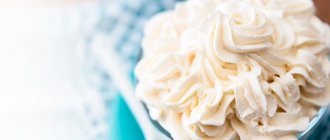Latte is a hot, layered coffee, medium-calorie drink made from 1 serving of espresso, milk and milk foam. Italy is considered the birthplace of the drink.
It was there that Italian housewives, to please children who wanted to be like their parents who drank coffee in the morning, diluted the strong drink with milk, “staining” it a little. The word “stained” is where the name “latte” comes from, which later became one of the most popular drinks in Europe.
Kinds
Latte without sugar (the calorie content of the drink when using 2.5% milk is no more than 93 kcal) is a popular coffee drink in Europe. Unlike cappuccino, latte according to the classic recipe is prepared from 1 portion of espresso (30-50 ml) and 4 portions of milk, as a result of which the drink has a pleasant sweetish creamy milky taste and low strength.
In modern coffee shops, a variation is more common, in which 80 ml of espresso (2 servings) and 4 servings of milk (120-150 ml) are used. This drink has a strong strength and is suitable for lovers of coffee and milk mixtures, decorated with abundant foam.
When preparing, coffee is poured into the whipped, loose milk foam in a thin stream, then syrup is added if desired and decorated with cinnamon or chocolate chips.
There are several types of milk-coffee drink:
- Cinnamon , in which cinnamon powder or stick is added to garnish the foam;
- With syrups . Syrups add sweetness to the latte and are added to the glass before foaming the milk. Vanilla, caramel, and nut syrups are best suited for this drink. It is not advisable to take fruit ones, as they can cause fermentation of the milk mixture.
- Vanilla. Prepare with the addition of a vanilla bean (or vanillin) when whipping the milk mixture.
- Caramel . Requires the use of caramel syrup or caramel added to the whipped milk.
- With ice cream . A traditional recipe in which an additional scoop of vanilla ice cream is added to the coffee and milk mixture.
- Autumn . A fashionable option used for Halloween. Consists of adding pumpkin puree to the drink for decoration.
- Black latte . A recipe developed by nutritionists and requiring a replacement for coffee 1 tab. activated carbon.
Perfect Matcha Latte
Everyone talks about it - from your friends and bloggers to doctors and world celebrities. Matcha Latte is a popular drink all over the world and is considered one of the healthiest. Just a fashion or really a product that makes you “get off” coffee, lose weight and feel great?
So let's find out together what kind of beast this “matcha” is, how to prepare it correctly at home, discuss tips that should be followed in preparation, and everything you may need to prepare “that same” Matcha Latte!
Why is everyone talking about Matcha Latte?
There are several good reasons for this:
– one cup of matcha has 137 times more antioxidants than one cup of regular green tea – it is a healthy alternative to coffee , since thanks to the content of caffeine and L-Theanine it provides stable (!) energy for up to 6 hours without causing nervousness – it stimulates brain function and helps to concentrate better - removes waste and toxins (from fast food, alcohol, etc.)
To prepare a delicious mug of Matcha Latte you will need:
- Matcha tea Early harvest (ideal combination of the delicate taste of matcha with milk) – 2 g
- Filtered hot water (t≈80°C) – 50 ml
- Plant milk (we recommend coconut milk diluted with water to your taste) – 150 ml
- Optional: honey, sugar, sweetener or syrup as a sweetener (we like Jerusalem artichoke and natural sugar cane syrup)
Calorie content, BJU
The calorie content of a sugar-free latte directly depends on the fat content of the milk used for its production. The approximate energy value of a latte made from espresso and milk with 2.5% fat is about 90-93 kcal.
Latte without sugar. Calorie content and ratio of BZHU.
Composition of the product:
| Squirrels | 5 gr. |
| Fats | 5.4 gr. |
| Carbohydrates | 8.9 gr. |
| Alimentary fiber | 0 |
| Water | 0 |
The original recipe requires adding fatty dairy products to the drink, complementing the taste with a variety of syrups, which significantly increases the calorie content of the milk-coffee mixture. The calorie content of lattes served in various establishments is slightly higher than at home due to the use of higher fat milk (3.2%), various syrups and decorations.
| McDonald's | energy value | 125 kcal |
| squirrels | 6 gr. | |
| fats | 7 gr. | |
| carbohydrates | 10 gr. | |
| Starbucks (plain latte) | energy value | 119 kcal |
| squirrels | 26 gr. | |
| fats | 6.7 gr. | |
| carbohydrates | 11 gr. | |
| Caramel Apple Latte | Energy value | 280 kcal |
| Walnut Ginger Latte | 270 kcal | |
| Gingerbread | 320 kcal | |
| CoffeeHouse (low fat) | Energy value | 73 kcl |
| squirrels | 4 gr. | |
| fats | 1.6 gr. | |
| carbohydrates | 6 gr. | |
| Coffee Bean, vanilla | Energy value | 210 kcal |
| squirrels | 15 gr. | |
| fats | 6.2 gr. | |
| carbohydrates | 20 gr. | |
| Coffee mania | Energy value | 156 kcal |
| squirrels | 7 gr. | |
| fats | 5 gr. | |
| carbohydrates | 15 gr. | |
| Late ice (milk 2.5% fat) | Energy value | 77 kcal |
| squirrels | 4.3 gr. | |
| fats | 5 gr. | |
| carbohydrates | 6.9 gr. |
Since the caloric content of the product increases significantly depending on the fat content of milk and sweet additives during dietary nutrition, it recommends drinking only a simple latte without syrups, chocolate chips and sugar.
A latte prepared using a coffee machine has a calorie content of 62 kcal, since it is prepared using a small volume of milk (about 100-120 ml) with a fat content of 2.5%, which is 52 kcal per 100 g. and low-calorie espresso, which has virtually no contact with water.
You can independently calculate the calorie content of a creamy coffee drink by taking the number of calories contained in the milk used, dividing them by 100 and multiplying by the desired volume. So if in a 240 ml glass there is about 180 ml of milk with a fat content of 2.5%, it means: the calorie content of the latte will be: 52/100*180=93.6 kcal.
Useful elements found in latte:
| Vitamins |
|
| Micro- and macroelements |
|
| Omega-6 | 32.5 mg |
Coffee calorie table. Ground or instant
The calorie content of instant coffee without sugar depends on the manufacturer. Let's conduct a comparative analysis of a pure drink, without additives. It is customary to indicate the KBJU of dry powder on the packaging. The amount per cup depends on individual preference. When calculating, be guided by how many spoons you usually put in.
One teaspoon contains approximately 5g of dry powder, the figure may vary slightly depending on the completeness of the filling. The calorie content per cup of instant coffee varies from manufacturer to manufacturer. On average – 140 kcal per 100 grams of coffee. One spoon contains approximately 8 kilocalories.
Benefit
A latte without sugar (the calorie content of the product is given in the article), due to the high milk content, supplies the body with a large amount of the “joy hormone”, which banishes drowsiness and helps fight the consequences of stressful situations.
Among the useful qualities of the product:
- good invigorating effect;
- assistance in restoring strength after suffering serious physical and mental stress;
- weakening of the severity of the manifestation of VSD and accompanying migraine;
- stabilization of potency;
- reducing the risk of developing cancer, Parkinson's disease and liver cirrhosis;
- replenishing the body with calcium and fluorine, which are responsible for the good condition of bones and teeth;
- regulation of the gastrointestinal tract, restoration of intestinal microflora;
- assistance in the treatment and prevention of cardiovascular pathologies;
- as a natural antioxidant reduces the negative impact of free radicals on the body's cells.
A large amount of milk prevents the negative qualities of pure espresso because:
- preventing the aggressive effect of gastric juice, intensely produced under the influence of caffeine, on the walls of the esophagus;
- preventing the leaching of calcium and the antioxidant complex from the body.
Latte is useful for pregnant women, especially those who cannot imagine their day without a cup of coffee. The caffeine contained in the product will help you wake up and invigorate, and a large amount of milk will compensate for the lack of nutrients and prevent an increase in acidity (caused by caffeine) in the body.
Amount of Kcal in different types of coffee
The calorie content of coffee drinks may vary, as it is determined by the calorie content of the ingredients in the composition. Let's look at the most popular types of coffee and their calorie content.
- Natural coffe
Black brewed coffee beans are considered very low in calories. There are 1-2 kcal per hundred milliliters of drink. Thus, drinking a 200 ml cup of natural bean coffee, you get a maximum of 4 Kcal
. Of course, the calorie content of the drink will remain the same if you do not add sugar or milk to it.
- Ground coffee
Ground coffee will also not harm your figure. A 200 ml cup of ground coffee will bring you only 2 Kcal.
- Instant coffee
Instant coffee has a higher calorie content, which is 7 Kcal per hundred milliliters of drink. By drinking a standard mug with a volume of 200-250 milliliters, you get about 14-17.5 kcal. And if you add sugar and drink this drink two or three times a day, it can quickly affect your figure. You can read more about the benefits and harms of instant coffee. You can learn more about freeze-dried instant coffee: how it is produced, which brands of coffee are best to choose.
- Americano
Americano coffee consists of espresso and water. Accordingly, the calorie content of this drink is low.
. A 450-milliliter serving of Americano will bring you only 15 kcal, the same as a serving. Considering the volume and good taste, we conclude that Americano coffee is a good option.
- Latte
Latte contains espresso, milk and foam. Obviously, the most high-calorie ingredient in a latte is milk, which adds “weight” to the drink. A standard serving without sugar contains at least 250 kcal. In our other article we talk about.
- Cappuccino
This drink contains espresso and high-calorie ingredients such as cream and sugar. The surface of the cappuccino is covered with milk foam, which is whipped from full-fat milk or cream. Naturally, given the composition of the drink, it simply cannot be low-calorie
. A serving of 150-180 ml with sugar and cream will bring you at least 210 Kcal.
You will learn how to make excellent cappuccino.
- Moccaccino
Moccacino contains espresso, milk, chocolate or chocolate syrup. In addition, according to some recipes, caramel is added to moccacino instead of sugar. An average serving of moccacino has a calorie content of about 290 kcal. Read all about mochaccino coffee and its recipes in the following.
- Glasse
Glasse is another original drink, which is given a special piquancy by the addition of ice cream. Obviously, such a high-calorie ingredient increases the calorie content of the entire drink. One serving of an incredibly tasty drink will bring you 125 Kcal. You can find the best recipes for making iced coffee.
- Frappuccino
Frappuccino is the highest calorie type of coffee
. Usually the drink is served in a large container, so while enjoying a Frappuccino, you will get at least 400 Kcal! You can read about what a Frappuccino is at.
- Rough coffee
Rough coffee is a coffee drink with a vanilla-milk flavor. The calorie content of a 150 ml serving of this type of coffee is at least 135 kcal, depending on the added ingredients. Find more detailed information about such a unique coffee drink as raff coffee.
- Coffee 3 in 1 with sugar and milk powder
A standard 3-in-1 coffee bag is a mixture of coffee, sugar, and milk powder. Typically such a bag weighs 20 grams. Half the weight of the mixture is sugar. 10 grams of sugar have a calorie content of 40 kcal. Powdered milk adds about 30 more kcal. As we found out, the calorie content of coffee itself is insignificant. In total we have about 70 Kcal in one bag.
If you're a tea and travel lover, then you'll love this rainforest drink made from a plant called Paraguayan holly. And you can find out that it makes excellent mate tea, as well as about the properties of this exotic drink.
Harm
In addition to its beneficial qualities, the caffeine contained in latte has a stimulating effect on the nervous system, which can cause insomnia in overly sensitive people. Drinking coffee drink also negatively affects the condition of tooth enamel, causing the appearance of yellow plaque.
Dentists strongly recommend performing oral hygiene after every cup of coffee you drink.
In case of improper (use of artificial milk substitutes, low-quality grains) or excessive consumption of the drink, indigestion, heartburn, and stool disorders may occur. A very large amount of drink can cause high blood pressure, depression of the nervous system, osteoporosis or stomach cancer.
In addition to dangerous consequences, large doses of caffeine cause addiction, which upon withdrawal provokes:
- headache;
- depression;
- disturbance of consciousness;
- tachycardia.
It's all about the milk
When we talk about coffee as a high-calorie drink, we actually mean what is added to that very coffee. Caffeine is very bitter, as are all products containing it. Therefore, we are accustomed to sweeten it with milk, sugar or syrup. And the larger your cup, the more milk and sugar you add.
Espresso drinks (lattes, cappuccinos) contain a minimal amount of water (usually about 45 ml/42 g per serving). Now for the simple math: a 450g grande latte from Starbucks contains two shots of espresso (84g), and the remaining 360g is pure milk (depending on the amount of foam). Total: about 160 calories (if milk is 1.5%). Now add cream, syrup and a little sugar to this and you get one of the highest calorie drinks, which is more like sweet milk than coffee.
Calorie content of the most popular coffee drinks
Instant coffee: 4 kcal per 226 ml serving
Espresso: 1 kcal per 28 ml
Natural coffee: 2 kcal per 226 ml
McDonald's cappuccino: 130 kcal per 450 ml
McDonald's latte: 180 kcal per 450 ml
McDonald's natural coffee (large portion): 0 kcal per 450 ml
McDonald's mocha: 330 kcal per 450 ml
Starbucks natural coffee (large portion): 5 kcal per 450 ml
Starbucks Americano: 15 kcal per 450 ml
Starbucks latte: 220 kcal per 450 ml
Starbucks mocha (without cream): 290 kcal per 450 ml
Starbucks mocha (with cream): 360 kcal per 450 ml
Starbucks cappuccino: 140 kcal per 450 ml
Starbucks Vanilla Frappuccino (with cream): 430 kcal per 450 ml
Starbucks White Chocolate Mint Mocha (with cream): 560 kcal per 450 ml
Starbucks hot chocolate (without cream): 360 kcal per 450 ml
Photo: Pakorn Polachai/EyeEm/Getty Images
Menu for diet
While on a diet, you can only drink a latte that you prepare yourself (preferably using a coffee machine, but you can use whole coffee beans), without adding sugar or syrups. Only skim or 2.5% fat milk is used.
This drink, unlike natural coffee without additives, is not the basis of mono-diets or fasting days, but is included in the diet for consumption in the morning or as a snack, since it perfectly dulls the feeling of hunger and gives the body the energy necessary for work and sports.
Diet rules:
- The diet includes only low-calorie foods, such as low-starch vegetables and fruits, fermented milk products, cereals, lean meats, fish and poultry.
- It is prohibited to consume fatty foods, confectionery, sugar, carbonated drinks, smoked sausages and fast food.
- Latte for a diet is prepared only independently from whole coffee beans with the addition of medium-fat (2.5%) milk. Lattes from Starbucks or McDonald's should not be used on a diet due to the large amount of sweet ingredients they contain.
- You should drink a coffee drink in the morning (for breakfast) or as a snack, no more than 3 times a day. Latte is prepared without the use of syrups, ice cream, or sugar. For taste, you can add cinnamon or nutmeg.
- In addition to latte, during the diet you should drink at least 1.5 liters of mineral (non-carbonated) water and green tea.
You should stick to the diet for at least 7 days. If well tolerated, it is allowed to extend the diet up to 10-14 days.
Diet menu:
| 1st day | |
| Breakfast |
|
| Snack |
|
| Dinner |
|
| snack |
|
| Dinner |
|
| 2nd day | |
| Breakfast |
|
| Snack |
|
| Dinner |
|
| Snack |
|
| Dinner |
|
| 3rd day | |
| Breakfast |
|
| Perex |
|
| Dinner |
|
| Perex |
|
| Dinner |
|
| 4th day | |
| Breakfast |
|
| Snack |
|
| Dinner |
|
| Snack |
|
| Dinner |
|
| 5th day | |
| Breakfast |
|
| Snack |
|
| Dinner |
|
| Perex |
|
| Dinner |
|
| 6th day | |
| Breakfast |
|
| Snack |
|
| Dinner |
|
| Snack |
|
| Dinner |
|
| 7th day | |
| Breakfast |
|
| Snack |
|
| Dinner |
|
| Snack |
|
| Dinner |
|
In a week of such a diet you can lose from 3 to 5 kg.
According to traditional Italian rules for "spotted drink":
- Served in tall transparent glasses through which the layers of milk, coffee and foam are clearly visible. First, the milk mixture is poured into the glass, then coffee is added carefully so as not to damage the layer. The last thing to lay out is loose creamy foam.
- A latte is prepared from roasted coffee beans and high-fat milk, whipped with a cappuccino maker in a special metal jug.
- The syrup should be poured in a thin stream until foam is applied, since it should settle at the bottom of the glass.
- The foam for a latte should be loose and not fluffy, so it is made from milk, not cream, unlike cappuccino. You can decorate it with cocoa powder, chocolate chips or cinnamon. Drawings on foam are allowed.
- The drink must be served with a long, wide straw and brown lump sugar.
Unlike cappuccino, whose calorie content is significantly higher than that of latte due to the large amount of cream added. Latte is prepared strictly without sugar from full-fat milk, added before, and not after (as in cappuccino) pouring in the coffee.
Latte foam should be loose, without large bubbles, which is especially welcome in cappuccino. The drink is given a special originality by the ornament created on the surface of the foam, decorated with cinnamon, nutmeg or chocolate inclusions.
Green tea matcha latte
Recently, in restaurants and coffee shops you can increasingly find a wide variety of drinks that cannot be clearly classified as ordinary tea or coffee. One such drink that is increasingly gaining popularity is matcha tea latte. Its name evokes associations with coffee, but in reality this drink is still tea.
Matcha tea latte - what is it?
Matcha tea latte is prepared using matcha tea, to which foamed milk and various sweeteners (sugar or honey) are added. It should be clarified that matcha is a special type of Japanese green tea, which is finely ground into powder to obtain a bright green powder.
In addition, to prepare a matcha latte, you can use not only cow’s milk, but also various plant milks, such as coconut, almond or soy milk.
Attention! Don't confuse matcha latte with a regular spiced chai latte; they are completely different drinks.
Where are you from?
Matcha tea, as already mentioned, is widespread in Japan, but in reality, the birthplace of this unusual tea is China. Back in the 10th century, Buddhists came up with a new way of making tea: a special variety was grown in the shade, and the collected tea leaves were dried and ground into powder using stone millstones.
In 1191, the Buddhist monk Eisai visited Japan and brought with him matcha, which the Japanese loved very much. After some time, tea fell out of use in China, but in Japan, on the contrary, it became one of the traditional drinks of the nobility.
In modern times, the unusual tea became known all over the world, but in many countries they began to add milk to it. The fact is that matcha has a specific bitter taste, and milk gives it a softer and more harmonious taste.
Chemical composition
To prepare matcha, whole unfermented tea leaves are taken, which retain their beneficial substances as much as possible. Matcha powder contains a huge amount of different vitamins and minerals. So, one cup of this tea is enough to satisfy most of the daily requirement of the following elements:
- iodine;
- calcium;
- potassium;
- magnesium;
- fluorine;
- iron.
In addition, matcha is high in antioxidants, amino acids and vitamins, the consumption of which leads to a lot of positive effects for the human body.
Why is it so popular today?
At one time, matcha latte was widely known only among vegans, but at some point, American actress Gwyneth Paltrow mentioned this tea in an interview, after which the drink became popular in the United States, and then in European countries. The fact is that in its invigorating properties it is similar to coffee, and its beneficial qualities are incomparable to anything else.
Beneficial features
It was noted above that, thanks to its powder form, matcha retains the largest proportion of vitamins and microelements. Due to its composition, tea can affect the body in the following ways:
- a high concentration of antioxidants helps fight wear and tear and aging of the body, and also strengthens the skin, making it resistant to ultraviolet radiation and aggressive external environments;
- increases the level of immunity and resistance to ARVI;
- has the same invigorating and stimulating effect as coffee, but at the same time has a more gentle effect, calms and normalizes the nervous system;
- accelerates metabolism due to faster breakdown of fats;
- lowers cholesterol levels, equalizes blood pressure, and ultimately reduces the risk of cardiovascular diseases;
- removes waste and toxins from the body, prevents the development of urolithiasis.
The beneficial properties of matcha latte are maximized thanks to its powder form. In addition, it is customary to drink tea with sediment at the bottom of the glass, so that all the important elements enter the body.
Taste characteristics
The matcha itself has a rich, unique taste that is completely different from the taste of regular green tea. In addition to bitter notes, tea has a sweetish-fresh, “sticky” taste, which is why the Japanese widely use it as a component of sweets.
Milk makes the taste of matcha softer, creamier, so this drink will appeal not only to fans of green tea, but also to lovers of latte or cappuccino coffee.
Elena Malysheva in her program talks in detail about the correct and real Matcha Latte tea, and teaches how to choose it correctly, brew it and drink it.
Calorie content
The caloric content of tea greatly depends on the presence of additives, the fat content of milk and the caloric content of sweeteners. On average, 100 ml of classic matcha latte contains:
- proteins – 3 g;
- fats – 2.8 g;
- carbohydrates – 10 g;
- calorie content – 78 kcal.
A lighter version may contain only 50 calories, so the calorie content of one cup (200 ml) of a tasty and healthy drink is estimated at 100-150 kcal.
Are there any contraindications?
Matcha latte does not have any special contraindications, but it is worth considering that it contains milk, which may be contraindicated if you are lactose intolerant. In reality, there is nothing wrong with this, since the tea recipe involves the use of not only cow’s milk, but also any plant milk.
You also need to remember that matcha contains a high concentration of caffeine, so tea should be drunk with caution in the following cases:
- age up to 12 years;
- period of pregnancy and lactation;
- the presence of chronic gastrointestinal diseases;
- taking antidepressants or tranquilizers;
- taking antidiabetic drugs.
Matcha lattes may cause severe nausea if consumed on an empty stomach. In addition, this tea can affect the absorption of iron, so it is contraindicated for people suffering from iron deficiency anemia.
Matcha latte in coffee shops and restaurants
In large cities, matcha-based drinks are quite popular. You can find them both in healthy food cafes and in regular coffee shops and restaurants. The cost ranges from 250 to 450 rubles per cup.
How to cook at home: recipes
Making matcha latte yourself is not difficult, you only need a little knowledge and skills.
Classic recipe
In fact, making a matcha latte is easier than, for example, brewing good coffee. The classic recipe does not require any fancy steps.
Ingredients
You will need:
- boiled water, cooled to 80°C - approximately 1/4 cup (50 ml);
- matcha tea;
- milk – 3/4 cup (150 ml).
At your discretion, you can add sugar or honey, as well as cinnamon and vanilla.
Required Tools
The traditional way to prepare matcha involves using a special tea bowl (chawan) and a special bamboo whisk (chasen). At home, a wide cup and a regular whisk are perfect.
Cooking steps
Matcha latte is prepared as follows:
- Pour 2 grams of tea into a cup, add hot water and let it brew for a while.
- Using a whisk, whisk the liquid into a thick and viscous paste. At this stage you should add sugar and other flavorings.
- Boil the milk, cool to 80°C, then whip it into an elastic foam.
- Gently pour the milk foam into the tea paste.
The tea is ready, you can enjoy a tasty and healthy drink.
Matcha latte with plant milk (soy, almond, coconut)
You can replace cow's milk with plant milk, in which case just follow the above recipe. There are more interesting options for making matcha latte. For one of them you will need:
- 1 glass of plant milk;
- 1 glass of water;
- 1 tbsp. l. matcha tea;
- 1 tbsp. l. coconut oil;
- 1 tsp. vanilla extract.
- sugar or honey to taste.
The water should be heated to 80°C, the milk should be slightly warmed. All components are mixed in a blender for about a minute, after which a pleasant drink is ready. You can drink it not only warm, but also with ice.
Chocolate matcha latte
For a more refined taste, you can add chocolate to your matcha latte. Have to take:
- 3/4 cup milk;
- 1/4 cup water;
- 1 tsp. matcha tea;
- 70 g chocolate;
- sugar or honey to taste.
Step-by-step cooking algorithm:
- The tea should be poured with water heated to 80°C and stirred with a whisk until a homogeneous mass is obtained.
- The milk must be heated and whipped until airy foam is obtained.
- Combine milk foam and tea paste, put on fire and bring to a boil, stirring constantly.
- Chop the chocolate and add to the tea, stirring until it is completely dissolved.
The drink is whipped again with a blender, after which it can be drunk.
Blue matcha latte (clitoria flower)
Blue matcha has nothing to do with regular matcha, since the raw material for its production is not tea leaves, but clitoris flowers. However, drinks from these unusual teas are prepared in a similar way.
To make a blue matcha latte you will need:
- 200 ml warm milk;
- 50 ml water 80°C;
- 2-3 g blue matcha;
- 1 tsp. honey or agave syrup.
The drink is prepared as follows:
- Tea is poured into a bowl or wide cup and filled with water. The liquid must be whisked until smooth.
- For sweetness, add honey or syrup to the drink.
- The resulting mixture is poured into a blender and heated milk is added, then whipped until foam forms.
The finished tea is poured into a cup and tea drinking begins.
Reviews about the drink
By tradition, we will give examples of reviews about matcha tea latte left by visitors to our website. You can also share your opinion through the comment form.
Review from Lika: I once went to a matcha green tea tasting. This drink is considered very healthy as it contains many amino acids, trace elements and vitamins. Despite the positive properties of the tea, I did not like the taste at all.
It has a bitter aftertaste and even makes your mouth a little sticky. Nevertheless, I think that those who have not tried tea should certainly try it, because it is a very interesting drink. Matcha latte allows you to dull the bitterness of the drink, I think this is its great advantage over classic matcha tea.
Review from Alina: Matcha looks like bright green dust. The texture is uniform, without lumps or large particles. It has a fairly strong aroma, smells pleasant of summer, freshly cut grass and green tea.
Pour hot water over the tea and whisk until foamy, then add whipped warm milk, I like oat milk better.
The taste of the tea is incredibly delicate, pleasant and refreshing. The soft taste of green tea and a thin milky trail can be felt well. Matcha puts you in the right mood, gives you energy, and increases your performance.
Matcha latte is an unusual Japanese tea with the addition of milk. It is distinguished not only by its unique taste, but also by its high content of important vitamins and microelements, which are preserved thanks to the powdered form of tea. There are different options for making matcha latte, so you can choose one to suit your taste.
Source: https://prochayok.ru/zelenyj-chaj/matcha-latte.html
